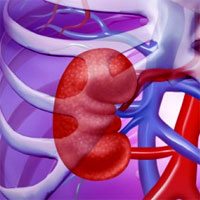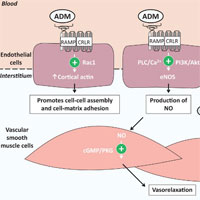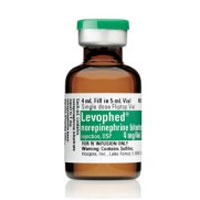Tag: hypotension

Magnesium Sulfate for Rapid Atrial Fibrillation?
Currently, several medications are recommended for the management of atrial fibrillation with rapid ventricular response in the emergency department including calcium channel blockers, beta blockers and digoxin (the optimal... read more

Update on Perioperative Acute Kidney Injury
Acute kidney injury (AKI) in the perioperative period is a common complication and is associated with increased morbidity and mortality. A standard definition and staging system for AKI has been developed, incorporating a... read more

Intensive Care Medicine in 2050: Vasopressors in Sepsis
Vasopressors are used in sepsis when hypotension is assumed to be mainly due to a decreased arterial tone. However, the appropriate time to initiate vasopressors is not clearly defined, and fluid administration is most... read more

Hemodynamic Tolerance to IV Clonidine Infusion in the PICU
Although administration of clonidine is often associated with bradycardia and hypotension, these complications do not seem clinically significant in a mixed PICU population with a high degree of disease severity. Clonidine... read more

Duration of hypotension before initiation of effective antimicrobial therapy is the critical determinant of survival in human septic shock
Effective antimicrobial administration within the first hour of documented hypotension was associated with increased survival to hospital discharge in adult patients with septic shock. Despite a progressive increase in mortality... read more

Low-dose vs. High-dose Magnesium in Rapid Afib
Magnesium sulfate has been used as an adjunct medication for the treatment of atrial fibrillation (AF) due to its ability to lessen sinus node depolarization via calcium antagonism. Prior studies investigating magnesium in... read more

MAP of 65: Target of the Past?
Septic shock is defined as sepsis with hypotension refractory to fluid challenge and requiring vasopressor support combined with an increase in arterial lactate reflecting impaired cellular energy metabolism and dysoxia.... read more

Vascular Effects of Adrenomedullin and the Anti-Adrenomedullin Antibody Adrecizumab in Sepsis
Sepsis remains a major scientific and medical challenge, for which, apart from significant refinements in supportive therapy, treatment has barely changed over the last few decades. During sepsis, both vascular tone and vascular... read more

What’s New in Severe Pulmonary Embolism?
Severe pulmonary embolism (PE) remains a major cause of mortality. For intensivists managing the most "severe" forms of PE, we highlight the main recent advances in the care of such patients including risk stratification,... read more

The Myth of Vasopressors and Ischemia
Despite the widespread clinical use, and their well-documented life-saving properties, vasopressors are often maligned, accused of causing ischemia to fingers, toes, mesentery, kidneys, and so forth. Not only is the evidence... read more

The Relationship Between ICU Hypotension and In-hospital Mortality and Morbidity in Septic Patients
Current guidelines recommend maintaining a mean arterial pressure (MAP)≥ 65 mmHg in septic patients. However, the relationship between hypotension and major complications in septic patients remains unclear. We, therefore,... read more

Incidence of hypotension according to the discontinuation order of vasopressors in the management of septic shock
Tapering NE rather than AVP may be associated with a higher incidence of hypotension in patients recovering from septic shock who are on concomitant NE and AVP. However, further studies with larger sample sizes are required... read more

Vasopressors for Hypotensive Shock
This review seeks unbiased evidence about the effects of different drugs that enhance blood pressure on risk of dying in critically ill patients with impaired blood circulation. Review authors identified 28 randomized controlled... read more

Hemodynamic Response After Rapid Sequence Induction With Ketamine in Out-of-Hospital Patients at Risk of Shock as Defined by the Shock Index
After ketamine induction, high shock index patients exhibited blunted hypertensive responses and more frequent hypotension, whereas low shock index patients had sustained increases in pulse rate and SBP. One hundred twelve... read more








